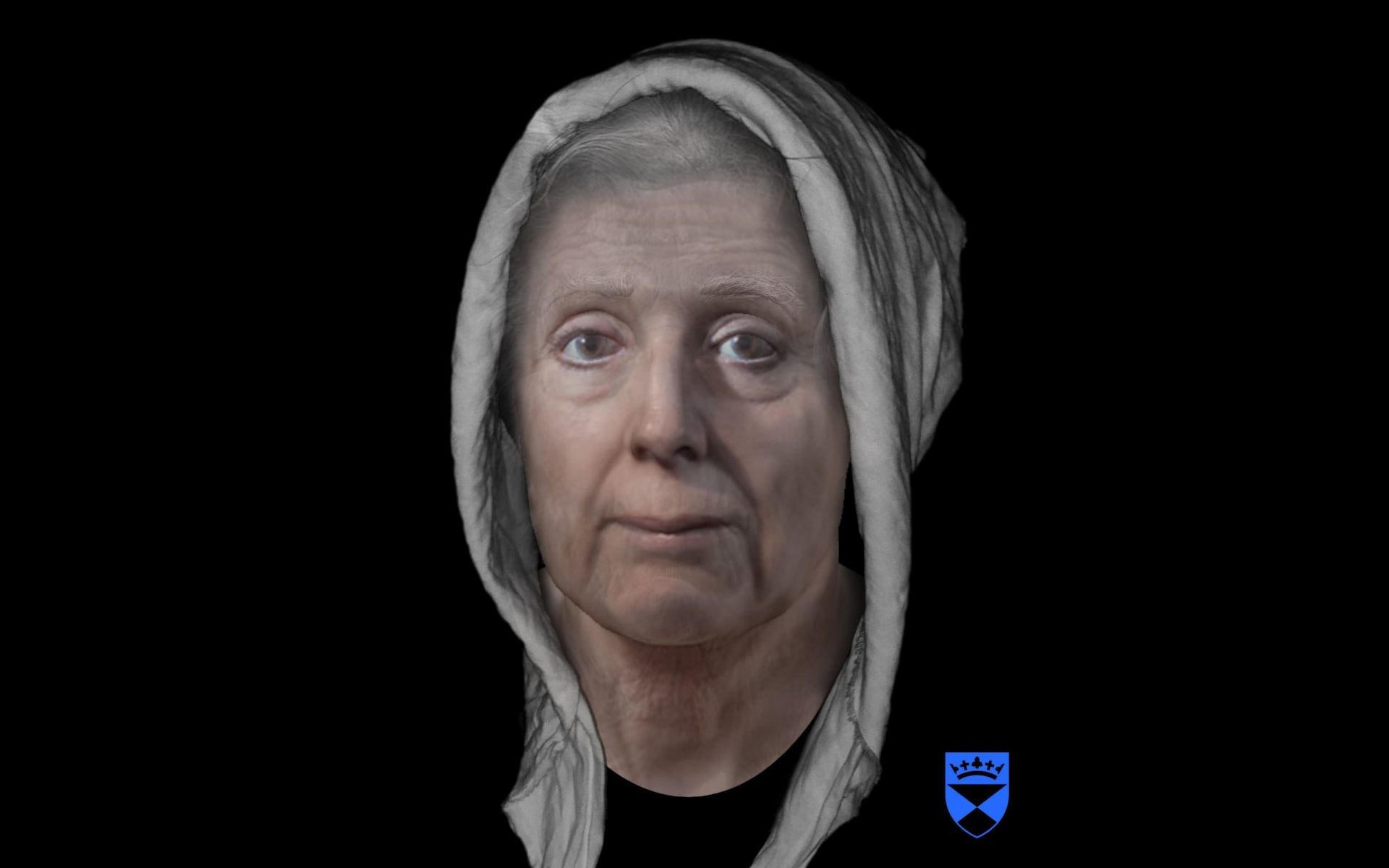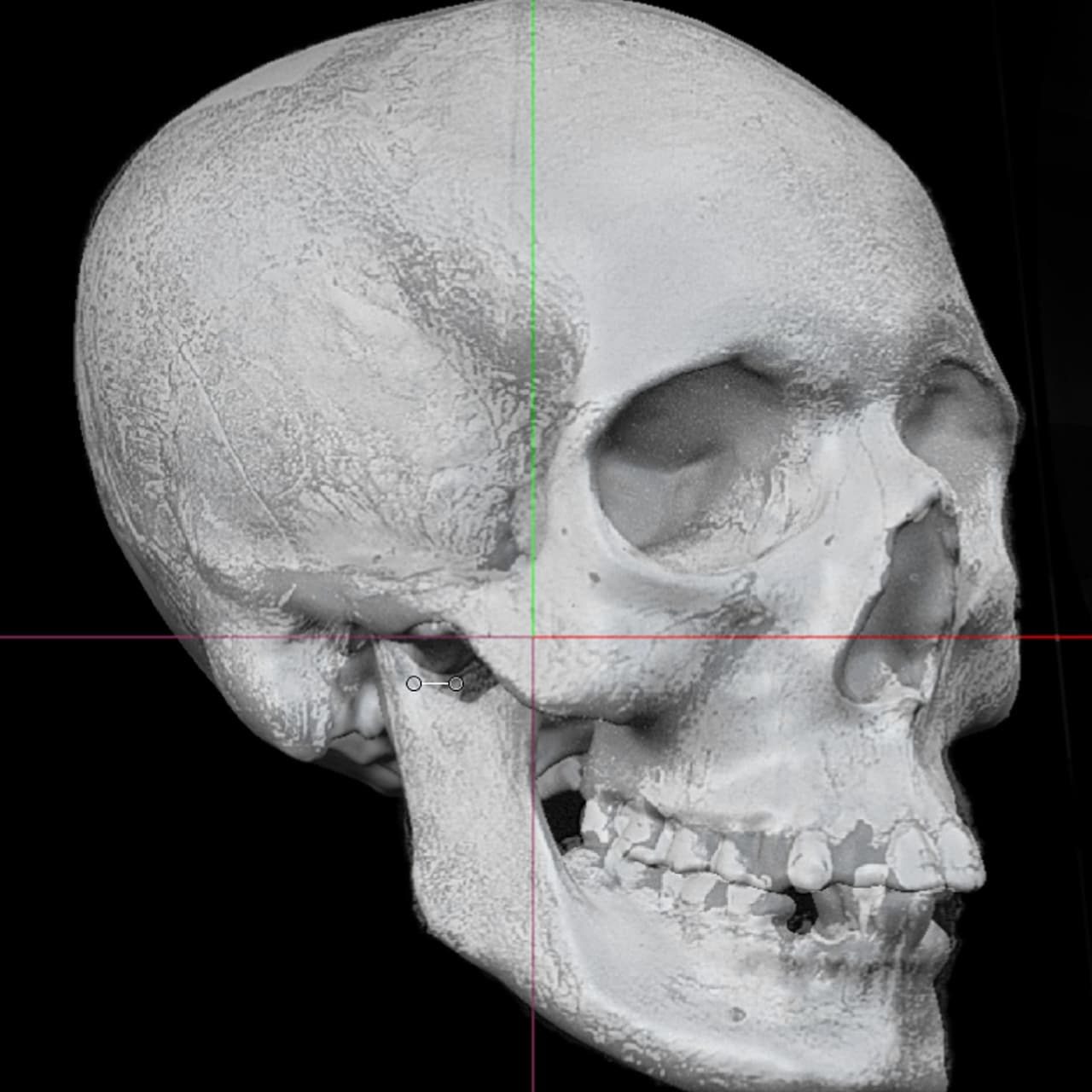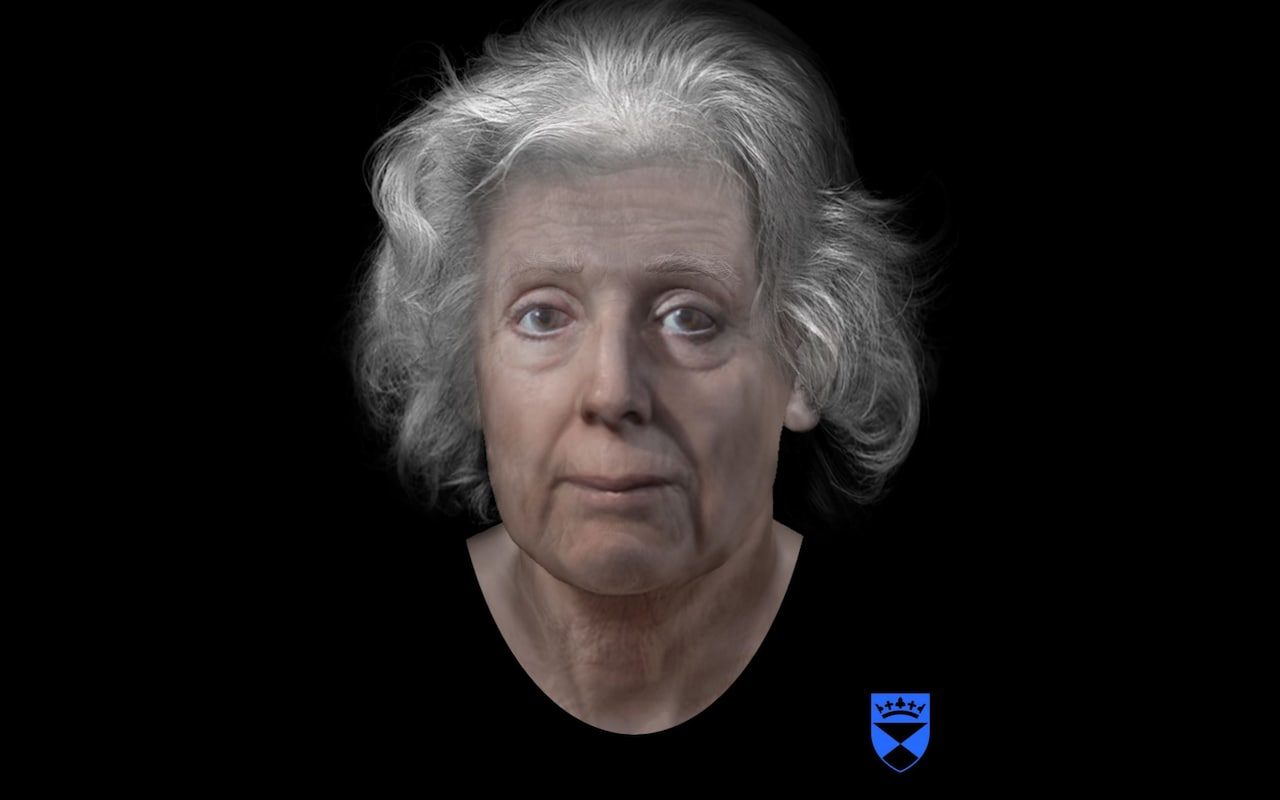BBC Radio Scotland's Time Travels programme has now unmasked her face by working with a forensic artist at the Centre for Anatomy and Human Identification at the University of Dundee.
The team believes it is likely to be the only accurate likeness of a Scottish "witch" in existence as most were burned, destroying any hope of reconstructing their faces from skulls.
Presenter Susan Morrison said: "It was a truly eerie moment when the face of Lilias suddenly appeared.
"Here was the face of a woman you could have a chat with, though knowing her story it was a wee bit difficult to look her in the eye."
Dr Christopher Rynn, who carried out the work using state-of-the-art 3D virtual sculpture, said: "When the reconstruction is up to the skin layer, it's a bit like meeting somebody and they begin to remind you of people you know, as you're tweaking the facial expression and adding photographic textures.
"There was nothing in Lilias' story that suggested to me that nowadays she would be considered as anything other than a victim of horrible circumstances, so I saw no reason to pull the face into an unpleasant or mean expression and she ended up having quite a kind face, quite naturally."
Ms Adie had been sentenced to be burned to death but died in prison beforehand, with one theory being she killed herself.
Her remains were buried on the beach between the low and the high tide marks under a large stone. Locals had sought to weigh down Ms Adie in her grave, perhaps to prevent her coming back to haunt them.
By the 19th century, scientific curiosity led to antiquarians digging up Ms Adie's remains to study and display.
Her skull eventually went to the St Andrews University Museum, where it was photographed more than 100 years ago. It then went missing at some point in the 20th century but the images remain and are held by the National Library of Scotland.
Comment: There is debate on the reliability of these facial reconstructions especially where soft tissue is not available: Facial reconstruction - anatomical art or artistic anatomy?
The records of her accusers paint a picture of a woman, possibly in her 60s, who may have been frail for some time, with failing eyesight. They also suggest a woman who showed courage in holding off her accusers and their demands for the names of others to interrogate and kill.
Programme historian Louise Yeoman added: "I think she was a very clever and inventive person. The point of the interrogation and its cruelties was to get names.
Comment: The accusation of sorcery has often been used to deflect blame from the ruling establishment and for further control of the population:
- Control of Uppity Women Behind Witchcraft Accusations?
- The Spanish Inquisition: A Lesson from History
"Lilias said that she couldn't give the names of other women at the witches' gatherings as they were masked like gentlewomen.
"She only gave names which were already known and kept up coming up with good reasons for not identifying other women for this horrendous treatment - despite the fact it would probably mean there was no let-up for her.
"It's sad to think her neighbours expected some terrifying monster when she was actually an innocent person who'd suffered terribly. The only thing that's monstrous here is the miscarriage of justice."
Comment: To further understand the possible origins and problems of those societies embroiled in the witch trials faced, see:






Comment: Real-life 'Hobbit' face revealed